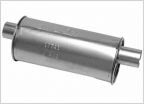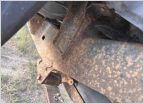-
Welcome to Tacoma World!
You are currently viewing as a guest! To get full-access, you need to register for a FREE account.
As a registered member, you’ll be able to:- Participate in all Tacoma discussion topics
- Communicate privately with other Tacoma owners from around the world
- Post your own photos in our Members Gallery
- Access all special features of the site
Ignition Hot Accessory Relay
Discussion in '1st Gen. Tacomas (1995-2004)' started by GreenIsGold Yota, Mar 28, 2017.


 OEM-ish sounding muffler?
OEM-ish sounding muffler? Is $335 a good price for dealer to install a timing belt kit?
Is $335 a good price for dealer to install a timing belt kit? Fuel tank skid plate
Fuel tank skid plate Help with temp gauge
Help with temp gauge How do I get ride off and prevent rust on my frame?
How do I get ride off and prevent rust on my frame?











































































